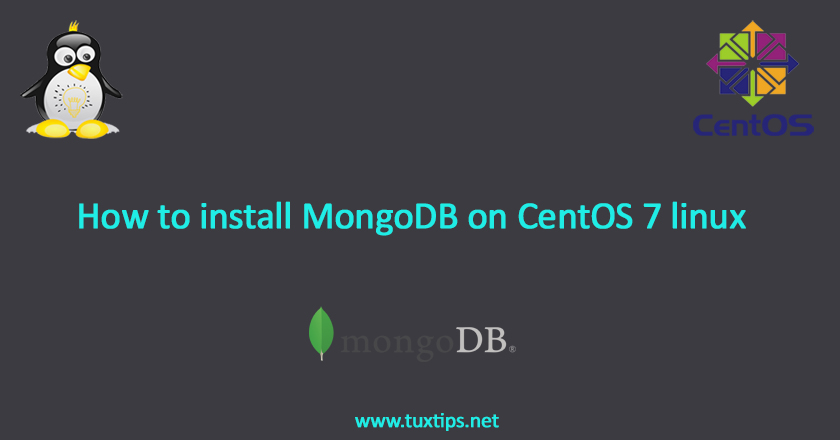
How to install MongoDB on CentOS 7 linux
MongoDB is a NoSQL database engine with full flexible index support and rich queries and here we want to show how to install MongoDB on CentOS 7 linux.
It is an opensource database engine that stores data as Key-Value in Json format. Some big companies including Adobe, Facebook, Google, eBay, and Coinbase use MongoDB in their applications.
Here is our environment:
OS: CentOS 7 linux on VMware
Firewall: firewalld
SElinux: enforcing
IP address: 192.168.147.128
MongoDB version: 4.2
1- Add MongoDB repository
to install latest version of MongoDB, we add its repository and then install it using yum package manager:
# vim /etc/yum.repos.d/mongodb.repo
then put these content in above file:
[MongoDB] name=MongoDB Repository baseurl=http://repo.mongodb.org/yum/redhat/$releasever/mongodb-org/4.2/$basearch/ gpgcheck=1 enabled=1 gpgkey=https://www.mongodb.org/static/pgp/server-4.2.asc
2- Install MongoDB
Now we install MongoDB package from repository with yum:
# yum install mongodb-org
3- Start service
we enable MongoDB service automatically upon system starting and also run this service now:
# systemctl enable mongod.service # systemctl start mongod.service # systemctl status mongod.service -l
if you have any output like the following in “systemctl status mongodb.service -l”:
SELinux is preventing /usr/bin/mongod from read access on the file snmp.
run these commands and see output of mongodb.service status until errors disappear:
# grep mongod /var/log/audit/audit.log | audit2allow -M mypol # semodule -i mypol.pp # grep ftdc /var/log/audit/audit.log | audit2allow -M mypol # semodule -i mypol.pp
MongoDB will be listening on “127.0.0.1:27017”.
4- Check version
to check MongoDB installed version, we use the following command:
# mongod --version
the output will be something like:
db version v4.2.1 git version: edf6d45851c0b9ee15548f0f847df141764a317e OpenSSL version: OpenSSL 1.0.1e-fips 11 Feb 2013 allocator: tcmalloc modules: none build environment: distmod: rhel70 distarch: x86_64 target_arch: x86_64
then we connect to MongoDB shell and execute some test commands:
[root@tuxtips ~]# mongo
# use mydb;
# db.test.save( { a: 1 } )
# db.test.find()
{ "_id" : ObjectId("54fc2a4c71b56443ced99ba2"), "a" : 1 }
5- Create admin user
to do that we connect to shell and execute these commands:
[root@tuxtips ~]# mongo
# use admin;
# db.createUser(
{
user: "tuxtips_admin",
pwd: "tuxtipspassword",
roles: [ { role: "userAdminAnyDatabase", db: "admin" } ]
}
)
if everything goes well the output will be:
Successfully added user: {
"user" : "tuxtips_admin",
"roles" : [
{
"role" : "userAdminAnyDatabase",
"db" : "admin"
}
]
}
to see list of users we can run:
# show users;
6- Configure authentication
Now for created admin user, we must create authentication to prevent other users from running commands without authorization.
To enable authentication edit the /lib/systemd/system/mongod.service file, under the [Service] section, locate and edit the Environment parameter as below:
Environment="OPTIONS= --auth -f /etc/mongod.conf"
because service file has been altered we must reload systemctl daemon and restart MongoDB service:
# systemctl daemon-reload # systemctl restart mongod
to authenticate, we pass credentials like below:
# use admin;
# db.auth('tuxtips_admin', 'tuxtipspassword');
then we can run any command we want like:
# show users
finally to exit MongoDB shell we execute:
# exit
